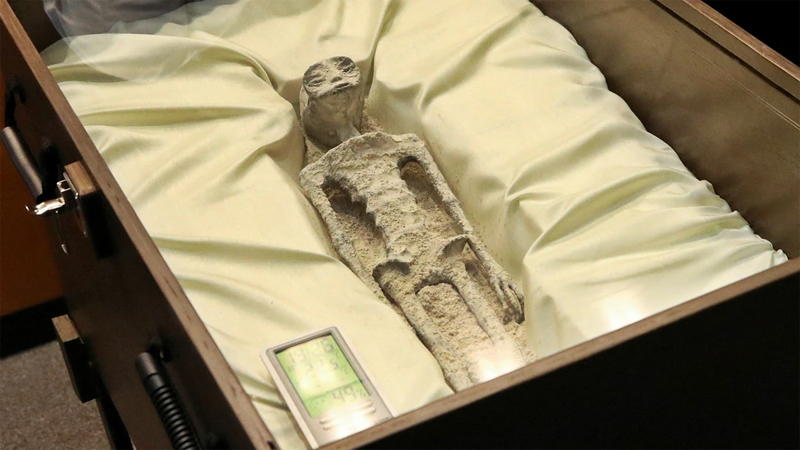NEW DELHI, Sept 18: Days after authories revealed non-human-like fossils allleging them to be of aliens, Nasa asked Mexican officials to make samples available to the world’s scientific community.
In a controversial move that has sparked international backlash, Mexican journalist and UFO enthusiast Jaime Maussan presented what he claimed were the remains of non-human beings at Mexico’s first congressional hearing on UFOs.
The alleged specimens, two tiny bodies with elongated heads and three fingers on each hand, were said to have been discovered in Peru in 2017. Maussan asserted that these remains were not related to any known life form on Earth.
However, this presentation was met with widespread skepticism and criticism.
Nasa officials, during a press conference, were questioned about the Mexican presentation.
David Spergel, former head of Princeton University’s astrophysics department, urged transparency, suggesting that any strange findings should be made available to the global scientific community for examination.
“If you have something strange, make samples available to the world’s scientific community, and we’ll see what’s there,” he said.
Meanwhile, former US Navy pilot Ryan Graves, who had previously testified about his experiences with Unidentified Anomalous Phenomena (UAP) at a U.S. Congressional hearing, expressed his disappointment on social media platform X, formerly known as Twitter.
He referred to the presentation as an “unsubstantiated stunt” and a “huge step backwards” for the issue.
Aliens
Mexican journalist and UFO enthusiast Jaime Maussan presented what he claimed were the remains of non-human beings. (Photo: Reuters)
Peruvian Culture Minister Leslie Urteaga also raised concerns about how the specimens had left Peru, stating that no scientific institution in the country had identified the remains as non-human. She revealed that there is an ongoing criminal complaint against individuals associated with Maussan.
Despite the criticism, Maussan defended his claims, challenging his detractors to present evidence countering his assertions. He stated that his critics were attempting to undermine the significance of his discovery with mere testimonies and questions, without providing any concrete evidence.
The National Autonomous University of Mexico (UNAM), which Maussan claimed had carbon-dated the specimens, clarified that its involvement was solely to determine the age of the samples.
The university declined requests to view the full study results or interview the researchers involved.


